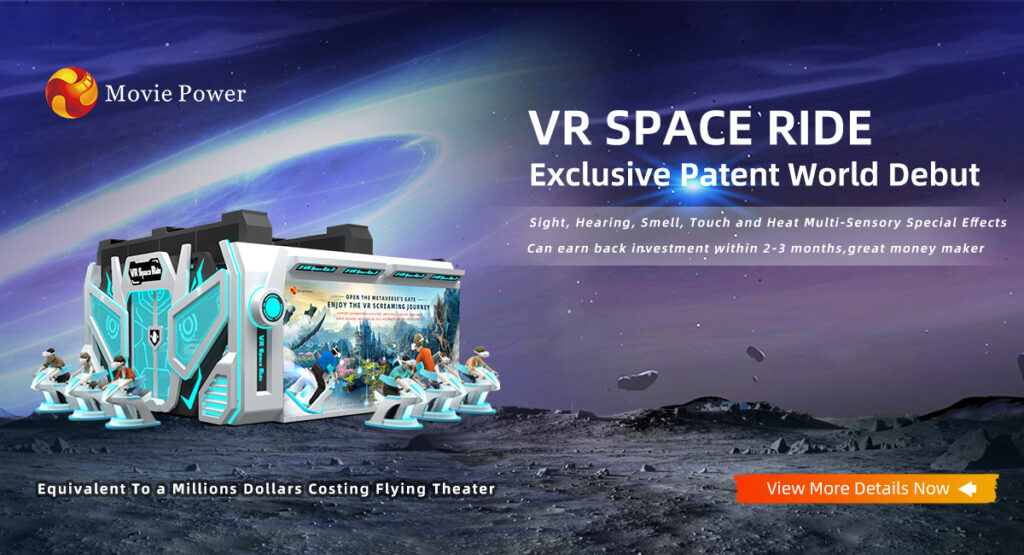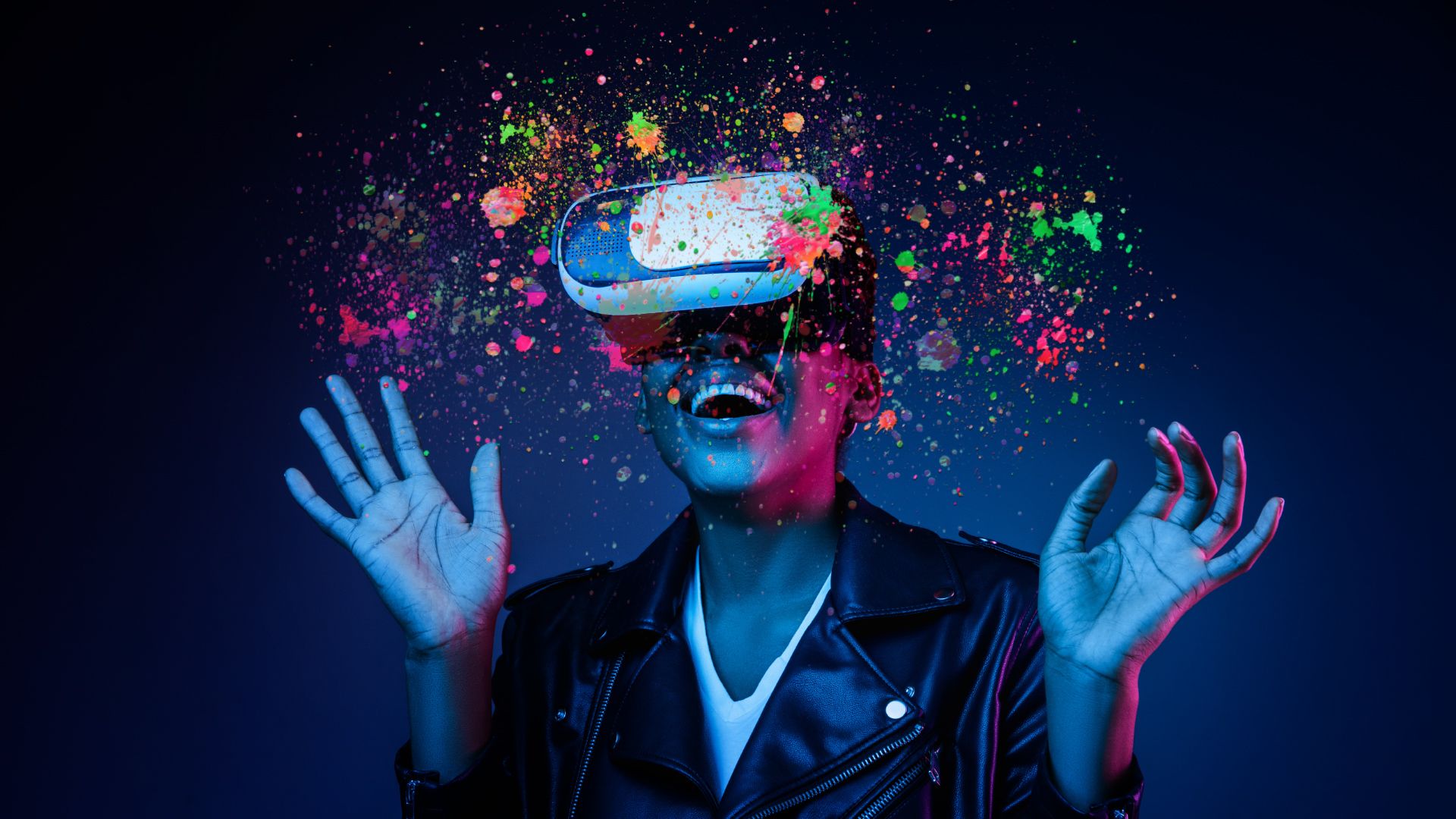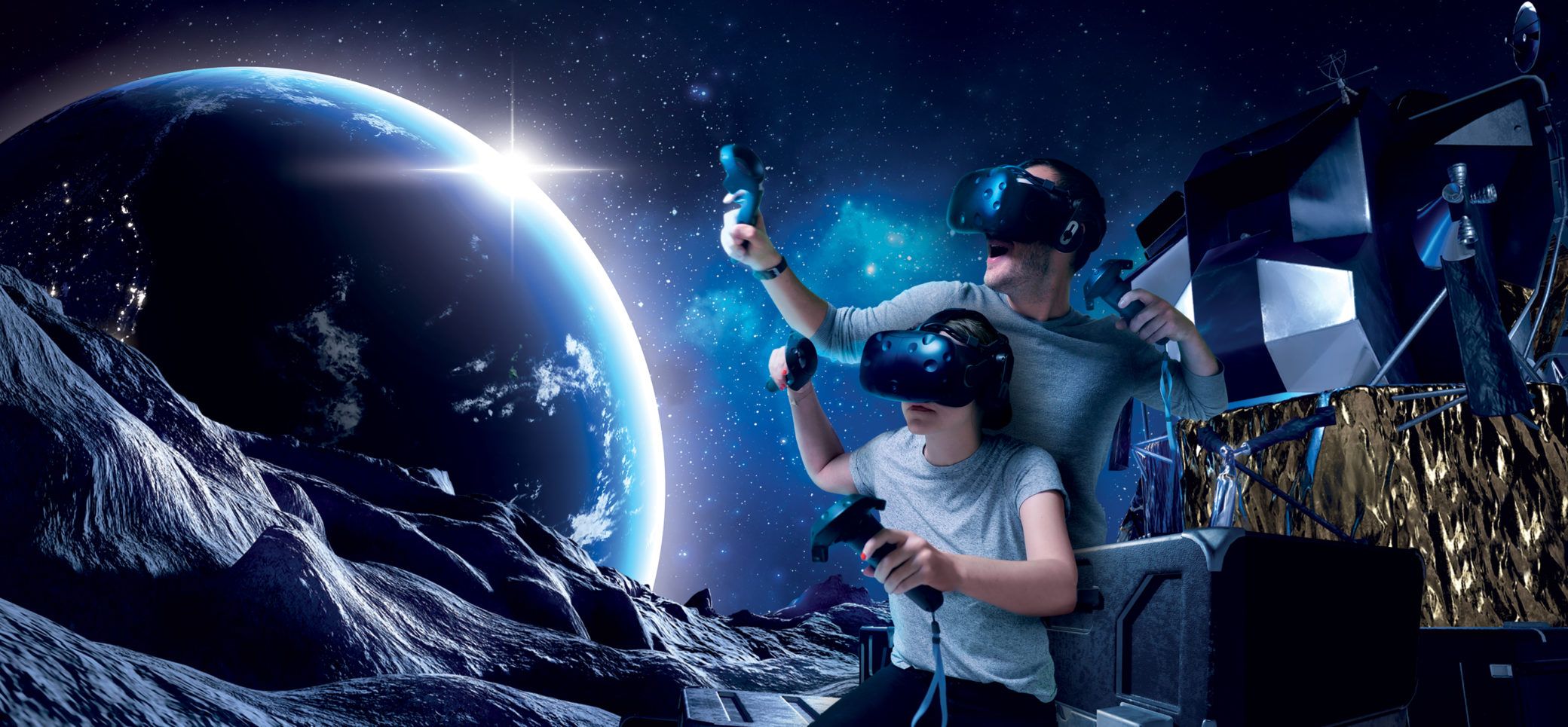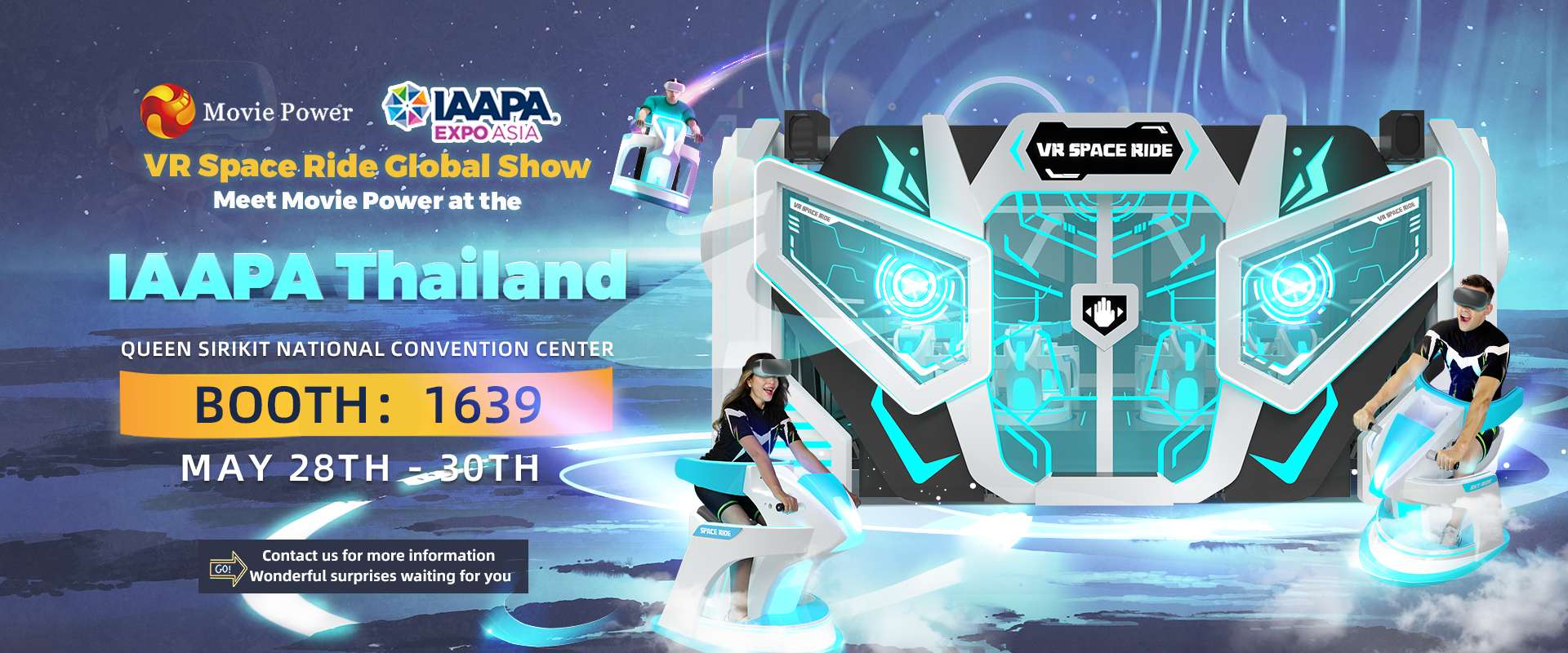Virtual Reality (VR) has emerged as a groundbreaking technology that has transformed various industries, and the film industry is no exception. Incorporating VR into movies presents a whole new realm of possibilities for filmmakers and movie enthusiasts alike.
In this blog, we will explore how VR integrates into the film industry and how it affects the sector.
What Is Virtual Reality?

Virtual reality can be defined as a computer-generated environment that simulates a realistic experience, often involving visual and auditory sensations. AR VR solutions have made significant strides in recent years, enabling users to interact with the virtual world and immerse themselves in a truly immersive experience. From 4D movie theaters with moving seats to top vr systems, the possibilities of VR in the film industry are limitless.
How Does It Evolve in Cinematics?
VR technology has come a long way when it comes to cinematic experiences.
From 5D cinemas to VR 9D cinemas, the film industry has explored various avenues to enhance the viewer’s immersion. These technologies aim to provide a more multi-dimensional and engaging experience that goes beyond what traditional cinema can offer.
With the advancements in VR companies, filmmakers now have access to cutting-edge tools and techniques to create captivating virtual worlds that blur the lines between reality and fiction.
The Potential of VR
VR holds immense potential in the film industry, allowing filmmakers to create immersive experiences that captivate audiences like never before. Creating immersive experiences in VR can transport viewers to different worlds and allow them to experience stories in a whole new way.
The power of immersion and active participation in motion seats cinema can revolutionize the way stories are told and experienced, making traditional passive movie watching a thing of the past.
The Power of Immersion
As AR VR development companies like Movie Power are growing stronger, filmmakers can now create immersive experiences that transport viewers to different worlds.
From 4D movie theater moving seats that mimic the on-screen action to interactive elements that engage the senses, VR movies can create a truly cinematic experience that goes beyond what traditional films can offer.
VR has the unique ability to immerse viewers in a narrative, allowing them to feel like active participants in the story. The heightened sense of presence and realism that VR provides can evoke powerful emotions and enhance the overall movie-watching experience. By placing the audience at the center of the action, VR movies have the potential to leave a lasting impact on viewers.
From Passive to Active Participation
VR movies offer a shift from passive movie-watching to active participation. Viewers can interact with the virtual environment, make choices that affect the storyline, and even become characters themselves. This level of interactivity and engagement allows for personalized and dynamic storytelling, creating a unique experience for each viewer.
A Case of VR in the Movies
Numerous case studies have showcased the successful integration of VR in the film industry.
The development of advanced VR systems, such as Movie Power, a professional VR solution provider, addresses these challenges by providing hardware and software solutions tailored for VR filmmaking.
Movie Power provides vr space theater simulator and multifunctional 4D movie chairs for 2 to 6 seats in a group to ensure fun in big families and friends. Besides, it offers various movie themes and effects, including back tickler, lightning, rain, fog, snow, bubbles, smell, and so on. You can even customize ones to your areas in this vr company.

Transitioning from Traditional Filmmaking to VR
As VR continues to gain popularity, many filmmakers are exploring the transition from traditional filmmaking to VR. Scriptwriting for VR presents unique challenges, as the narrative needs to account for the interactive and immersive nature of the medium. Additionally, directors must adapt shot composition and framing techniques to guide the audience’s attention within the virtual environment.
Scriptwriting for VR
Scriptwriting for VR requires a departure from linear storytelling, with a focus on creating branching narratives and multiple story pathways that viewers can explore. The non-linear nature of VR storytelling allows for personalized experiences and different story outcomes based on the viewer’s choices.
Direction and Shot Composition
In VR filmmaking, directors need to consider how to guide the viewer’s attention within the virtual environment. Traditional framing techniques may not translate well in VR, as viewers have the freedom to look in any direction. Directors must experiment with new techniques, such as spatial sound and visual cues, to direct the audience’s focus within the virtual world.
What VR Means for Moviegoers

For moviegoers, VR opens up a whole new world of possibilities. Augmented theater experiences, such as interactive movie theater seats, offer an enhanced cinematic experience that goes beyond the screen. Additionally, the advent of home VR systems allows movie enthusiasts to enjoy immersive movies from the comfort of their own homes.
Augmented Theater Experiences
Interactive movie theater seats integrate physical sensations with the on-screen action, adding an extra layer of immersion to the movie-watching experience. These interactive elements allow viewers to feel vibrations, movements, and other physical cues that enhance their connection with the virtual world.
Home VR Systems
Home VR systems, like interactive movie theater seats, enable movie enthusiasts to enjoy immersive experiences from the comfort of their homes. With the availability of affordable VR headsets and content, viewers can explore virtual worlds and watch VR movies at their convenience.
The Challenge of Integrating VR in Film Making
While VR presents exciting possibilities, there are challenges that filmmakers face when integrating VR into the traditional filmmaking process. Overcoming technical hurdles and ensuring viewer comfort are essential for a seamless VR experience.
Technical Hurdles
Integrating VR into filmmaking requires overcoming technical challenges, such as stitching together multiple camera feeds to create a seamless 360-degree view.
Additionally, the rendering of high-quality and realistic VR content requires significant computational power.
AR and VR companies play a crucial role in developing the tools and technologies needed to overcome these technical hurdles.
Physical Discomfort
VR movies can induce disorientation and discomfort in viewers due to the immersive nature of the experience.
Filmmakers must carefully consider the comfort of the audience, minimizing motion sickness and discomfort while maintaining an immersive narrative.
Potential Risks of VR Movies
While VR movies offer exciting possibilities, some potential risks and challenges need to be addressed.
- Physical discomfort: VR movies require individuals to wear a headset, which can cause discomfort, including headaches, dizziness, and motion sickness. This can limit the duration of viewing or discourage some individuals from experiencing VR movies altogether.
- Limited accessibility: Not everyone has access to VR technology such as headsets or the necessary hardware to support VR experiences, which can limit the reach and distribution of VR movies.
- Limited storytelling techniques: VR movies often rely on a first-person point of view, which limits the traditional techniques of filmmaking such as editing and framing. This can pose a challenge in creating compelling narratives that engage audiences.
- Technical limitations: VR movies are still limited by technical constraints such as the resolution and quality of the display, which may not match the level of realism found in traditional movies. This can affect the overall visual experience and immersion.
- Intellectual property issues: As VR movies become more popular, there may be increased concerns about copyright infringement and protecting intellectual property, especially with the potential for unauthorized distribution and piracy.
- Legal and safety challenges: VR movies often require individuals to be fully immersed in the virtual environment, which can pose potential safety risks, such as injuries due to physical reactions or accidents caused by the lack of awareness of the real-world surroundings. Filmmakers and creators may face legal challenges in ensuring the safety of viewers and avoiding potential liabilities.
- Filmmakers and AR VR development companies must prioritize user safety and well-being when creating VR content.
The Future: Predictions and Possibilities
Looking ahead, the future of VR movies holds numerous predictions and possibilities. Advanced storytelling techniques through VR can create deeply immersive and interactive narratives. Furthermore, combining VR with AI can revolutionize the movie industry by providing personalized experiences tailored to each viewer’s preferences.
Advanced Storytelling through VR
With the advancements in VR technology, filmmakers can explore advanced storytelling techniques that leverage the medium’s unique capabilities.
From non-linear narratives to interactive elements, VR opens up new avenues for creating compelling and personalized stories.
VR Combined with AI
By combining VR with AI, filmmakers can create personalized movie experiences based on individual preferences and feedback.
Top VR systems equipped with AI algorithms can analyze viewer data to tailor the narrative, characters, and even the overall mood of the movie to resonate with each viewer.
Conclusion
In conclusion, VR has the potential to revolutionize the film industry, allowing for immersive experiences and active participation by viewers.
While there are challenges to integrating VR into filmmaking, advancements in technology and the dedication of AR VR solution providers like MoviePower are paving the way for a future where VR movies become an integral part of the cinematic experience.
As VR continues to evolve, we can expect an exciting future filled with innovative storytelling and exhilarating virtual adventures.




